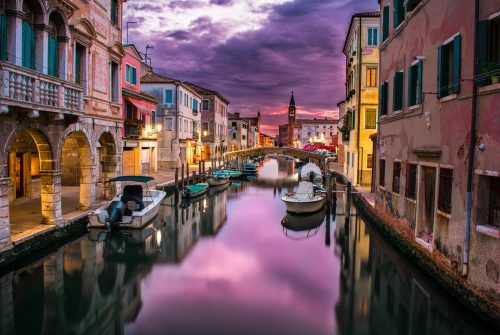The trees are the side-victims of our indifference for global warming
7 November 2018 | Written by Stefano Tenedini
There are 14 million plants affected by the wave of bad weather. And if the warming of the planet is the first responsible, the accomplice is still the man. That does not react, rather remains inert and apathetic. If we do not change our path, a dramatic future awaits us.

A tragedy that goes well beyond the broken roads, the mud to be shoveled, the houses that will be rebuilt. It is a drama that will accompany us for decades, a wound that will heal only at the slow and measured pace of nature. The bad weather of the last days in the mountains of Veneto, Trentino and Friuli has uprooted 14 million trees. This is what Coldiretti, who has identified the main victims in beeches and firs, estimated and who also explained: “It will take almost a century to return to normal, and without woods to stem the next rains, we will see other landslides and landslides.”
A serious environmental damage but also an economic one, because Italy already imports 80% of the wood it consumes. So, losses for the wood supply chain, fewer jobs, entire valleys in crisis and tourists fleeing from this collapse. The fault is the anomalous wind, but also the progressive abandonment of the maintenance of the wooded areas, which today occupy more than a third of the country’s surface, doubled since the Unification of Italy. This could be considered good news, except it only depends on the depopulation of the mountains and the abandonment of farms that no longer find an economic balance.
And if Samantha Cristoforetti, originally from Malé, in Val di Sole, expresses her sadness with a poetic image (“I grew up among the trees of Trentino. As a child I thought they were eternal and that it was firs, making the branches sway, that create the wind”), are the long times of recovery to worry. On the Asiago plateau, scourged by gusts, the Forestry registers say that the woods annihilated by the cannonades of the First World War or cut to warm up at the end of the Second only reappeared in the mid-eighties with the extent and density that they had in the nineteenth century.
The great defendant behind every single environmental disaster, however, is global warming. And what is happening is just a taste of what we can expect in the future. “If we do not act soon, immediately, the world will have to expect increasingly extreme and widespread meteorological events. A part of the planet will become unlivable, too hot or too dry, while the growing population will demand more and more land to feed: an unsustainable scenario”, explains Michael Mann, professor of Atmospheric Science at Penn State.
To the point that containing the increase of the planet’s temperature to 1.5 degrees by 2030, as assumed by the Paris agreement (a goal from which we are still very far away), might not be enough. “We would have more bad weather but also longer periods of drought, with the risk of fires, coastal areas threatened by rising sea levels, areas impossible to cultivate”, explains Kevin Trenberth, analyst of the National Atmospheric Research Center of the United States. “We need to change our lifestyle, accept sacrifices and increase energy efficiency to reduce man’s carbon footprint and help slow down the damage”.
And there is another risk, more subtle and silent but just as damaging: the severe alarm on climate change is welcomed with apathy, if not with impatience. It is the belief that it is not a problem of ours, but of someone else. Yes, ok, there is the environmental risk, but the carbon emissions are increasing more slowly, so it is not necessary to shake so much… Too bad that the steps forward depend on the progressive closure of coal-fired power plants, while the next steps will depend on all of us. But which one?
Fly less. Eat less meat and dairy products. Consume more local foods. Use the bicycle more often. Lower the radiators and put an extra sweater. Better insulate the houses. Do not produce and use plastics. Encouraging plants to capture and store carbon dioxide. All behaviors that a person takes only if they are convinced of it: in Europe, though, three quarters of the population is worried, but less than a third would accept higher taxes on fossil fuels to reduce emissions. So how do we fight passivity and inertia? Explaining that environmental risk is “here and now”, it will not only affect “others” in the distant future. Or removing the political and ideological prejudices: the welfare of the planet is not right or left.
While we regret the trees lost in Asiago, in Cadore and in the Agordino, let commit ourselves to demolishing the belief that climate change is “their business”. Let’s see it in a positive way: the change of style will not only bring tears and blood, but also benefits. The benefit of policies to reduce emissions is measurable even now: what is valuable for us and our grandchildren clean air, healthy forests, well-insulated homes, health (and lower related costs), a circular economy that does not destroy but uses better? Here is the way to go: find the right and rational arguments to persuade the skeptics.





